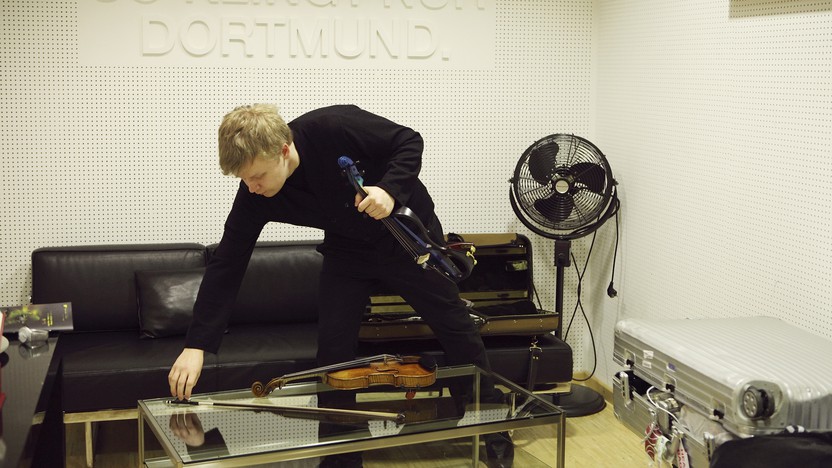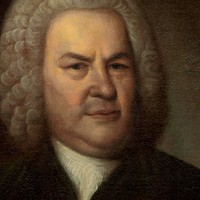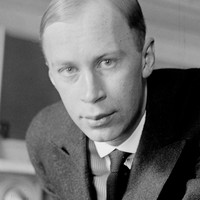Happy Hour Concert: Kuusisto, Bach and Prokofiev

Sponsored By

Sponsored By

 Watch Video
Watch Video
Instead of the typical concerto grosso setup of a solo group within the orchestra, Johann Sebastian Bach’s Third Brandenburg Concerto treats all members of the ensemble as soloists, with independent lines for three violins, three violas and three cellos supported by the basso continuo accompaniment. The equitable distribution of the material is especially clear in the first movement, in which the primary motive — a three-note figure that drops to the lower neighbor note and then returns to the starting pitch — cascades through the different voices.
The central Adagio movement consists simply of two linking chords, sometimes elaborated by an improvised cadenza. The concerto closes with a barreling Allegro finale, its tempo and character matching the reeling gigues that conclude most of Bach’s dance suites.
Aaron Grad ©2021
 Listen to Audio
Listen to Audio
Spending the summer outside of Petrograd in 1917, the 26-year-old Sergei Prokofiev challenged himself to compose without sitting at the piano, and he used Franz Joseph Haydn as inspiration for his svelte First Symphony. This score’s nickname as the “Classical” Symphony is well-deserved, and it served as an early harbinger of the neoclassical trend that swept through modern music in the 1920s.
A leading orchestra in Haydn’s day operated out of the royal court in Mannheim, Germany, and one of their signature moves was the rising “Mannheim Rocket,” which Prokofiev mimicked with the explosive arpeggio that launches his symphony. The second theme, played by the violins as they navigate absurdly wide leaps, shows how effectively Prokofiev used parody and exaggeration to simultaneously celebrate and skewer his source material.
The Larghetto second movement centers on a singing theme that enters in the clear treble of the violins. A contrasting middle section introduces a steady trickle of sixteenth notes, and then the closing passage interweaves both sounds.
Instead of a minuet or scherzo, the symphony turns next to a Gavotte, a staple of French dance suites from the Baroque era. The finale races to the finish on a stream of whirlwind eighth notes, with interlocking rhythmic patterns and seamless handoffs between sections that make for the musical equivalent of a relay race.
Aaron Grad ©2024
Happy Hour: 4–6pm
Concert: 6–7pm
Twin Cities audiences have a chance to hear this program that Artistic Partner Pekka Kuusisto and the SPCO will bring to New York’s Lincoln Center in May of 2020. Bach’s Third Brandenburg Concerto, with its rapid-fire counterpoint and interplay between each musician, serves as the inspiration for Anders Hillborg’s violin concerto, Bach Materia, written specifically for Kuusisto and his improvisational abilities.
Get driving directions and find nearby parking.
Find dining options close to the venue.
View seating charts to find out where you'll be seating.
SPCO concerts are made possible by audience contributions.
For exclusive discounts, behind-the-scenes info, and more:
Sign up for our email club!
